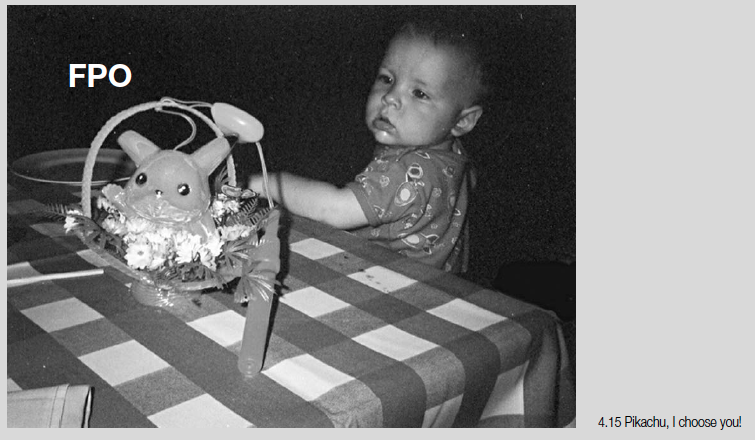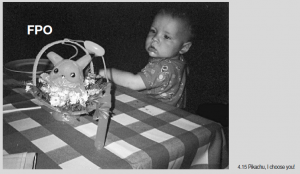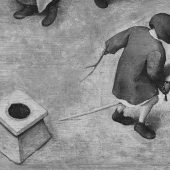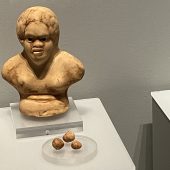Something I started writing at the end of the last century! From Lister et al 2009, New Media: a critical introduction 2nd ed.), 292-294
CASE STUDY 4.10: Pokémon: videogames as new (mass) media
To explore the issues arising from popular new media’s implication within commercial entertainment culture we will return to the multiplatform worlds of Pokémon as a case study. Beginning life in 1996 as a game for the Nintendo Gameboy hand-held videogame console, Pokémon went on to achieve dramatic success as a card collecting and trading game, and grew to a merchandising franchise worth $5 billion a year. The ‘Pocket Monsters’ feature in a television series, animated feature films, videogames on all Nintendo consoles, and all the other licensed products of children’s media culture. It is estimated that, at the phenomenon’s height, half of all Japanese seven- to twelve-year-olds were regular players. Even before it had been released in the UK, Pokémon: the First Movie had overtaken Lion King as the most successful animated film (Guardian, 20 April 2000). After pornography, Pokémon was the most searched for subject on the web in 1999 (Guardian Editor, 21 April 2000).
Pokémon is an example of the transmedial ‘entertainment supersystem’ or convergent ‘media mix’ discussed above in 4.3.3. Marsha Kinder’s developed her notion of the ‘entertainment supersystem’ through studying Teenage Mutant Ninja Turtles, a children’s media craze of the late 1980s. Like the Turtles, Pokémon is based around ritualised conflict (and, like the Turtles a decade earlier, has had its products banned from schools for apparently provoking real fights). However, Pokémon has exceeded even the Turtles in its saturation of children’s media and everyday lives:
The real reason for the game’s astounding success probably has more to do with the breathtakingly clever way in which Nintendo and its franchisees have created a self-referential world in which every product – every trading card, computer game, movie, cartoon and hamburger box – serves as propaganda for all the others. (Burkeman 2000: 2)
The idea that we are seeing the emergence of a global commercial popular culture is a familiar one. This global culture is, however, commonly viewed as evidence of US cultural dominance, with talk of Disnification or McDonaldisation as the analogue in the cultural sphere to globalisation in the economic sphere. Pokémon and Teenage Mutant Ninja Turtles, however (along with other supersystems such as Power Rangers), are evidence of a meeting and hybridisation of Eastern and Western popular cultural forms. Even before Pokémon, the videogame was perhaps the most thoroughly transnational form of popular culture, both as an industry (with Sony, Sega and Nintendo as the key players) but also at the level of content – the characters and narratives of many videogames are evidence of relays of influence between America and Japan.
Nintendo, in its pre-videogame incarnation as playing card manufacturer, introduced the first Disney licensing into Japan soon after the Second World War, and a tremendous boom in (the already established) Japanese animation industry followed. As Disney took European folktales, stripped them of their original religious motivations, and animated them with the anxieties and morals of a Western bourgeoisie, so Japanese anime (animated films) and manga (comics) took Disney images, with their graphic resonances with traditional Japanese art, and charged them with very different philosophies.
MacKenzie Wark asserts that videogames are ‘primers in junk consumerism’ (Wark 1994). If we accept this analysis, then the Pokémon card game could also be seen as an education in market economics. There are over 150 characters in each iteration of the gameworld, each with their own card, and the manufacturers ensure competition and trade between players (and sales) by restricting the supply of certain cards. This exploitation of the established children’s culture of collecting has been widely criticised: ‘the result is a particularly pure form of kiddie capitalism, in which acquisition is no longer just a means to further play, but the very essence of play itself’ (Burkeman 2000: 2).
However, this trading aspect also makes it a sociable game, with its own improvised playground-level practices and the emergence of local cultural economies such as collectors’ fairs and game tournaments. To determine whether Pokémon can in any way be seen to exceed ‘kiddie capitalism’ – whether its status as one of the most effective of the ‘ideal commodities’ of videogames means it reduces childhood and play to a nightmare of commodification and manipulation – we would need to study in more detail the ways in which the games are played and articulated in children’s everyday lives. In her studies of similar media mix cultures in Japan (discussed in 4.3.3 above) Mizuko Ito puts the issue thus:
The rise of global communication and media networks is tied to an imagination that is more commercially driven, fantasy-based, widely shared, and central to our everyday lives at the same time as it is now becoming more amenable to local refashioning and mobilization in highly differentiated ways (Ito, undated).
A vivid example of this refashioning of commercial media by everyday imagination is provided by Julian Sefton-Green’s study of the consumption of the Pokémon game-universe by his 6-year-old son, Sam (Sefton-Green 2004). The study offers significant insights into computer games as distinct media forms and their play as distinct cultural practices. For example, Sam’s Gameboy sessions alternated with intense periods of study, poring over Pokémon magazines, rehearsing plots and remembering cues. He learned all the maps within the Poké-world and the locations of secret keys and potions. Obsessive discussion about how to get his Pokémon characters to grow levels (evolve) and to have enough strength and / or hit points to defeat the enemy he knew he was going to face . . .
Towards the end of the game he did get very frustrated with his ability to defeat the Elite 4 (the penultimate challenge) and eventually he sought help. About 75 hours into the game, on a visit to the home of family friends who had older children (and Gameboys), Sam asked for their assistance. The older boys gave him some advice and also allowed him to hook his Gameboy to one of their machines to swap characters; taking pity on him, they gave him a well-developed Golduck (level 60). At that point, Sam essentially saw the game as a personal individual challenge and because he was not part of a larger community of players he seemed indifferent to the social dimension provided by this aspect of the game. Crucially, from his perspective, when he was given the Golduck, he also learned a ‘cheat’: ‘You go to Viridian City and talk to this person who tells you how to train Pokémon. Then you go to Cinnabar Island and swim along the right hand edge. When you find a Missingo it changes to what’s top of your list [of objects carried with you] to more than a hundred; and if it’s rare candy [which enables Pokémon to evolve] you can grow your Pokémon’ (Sefton-Green 2004: 147).





